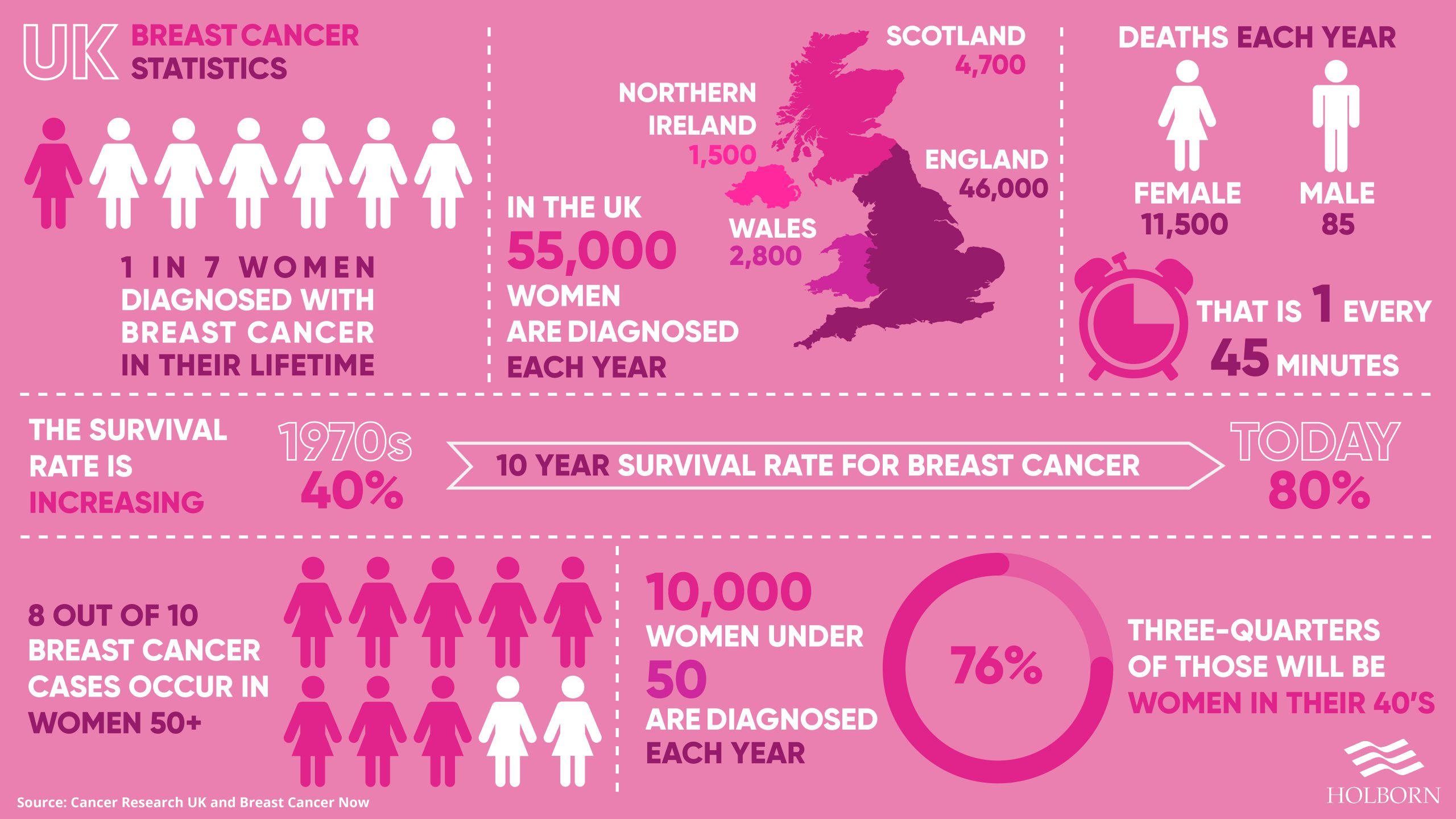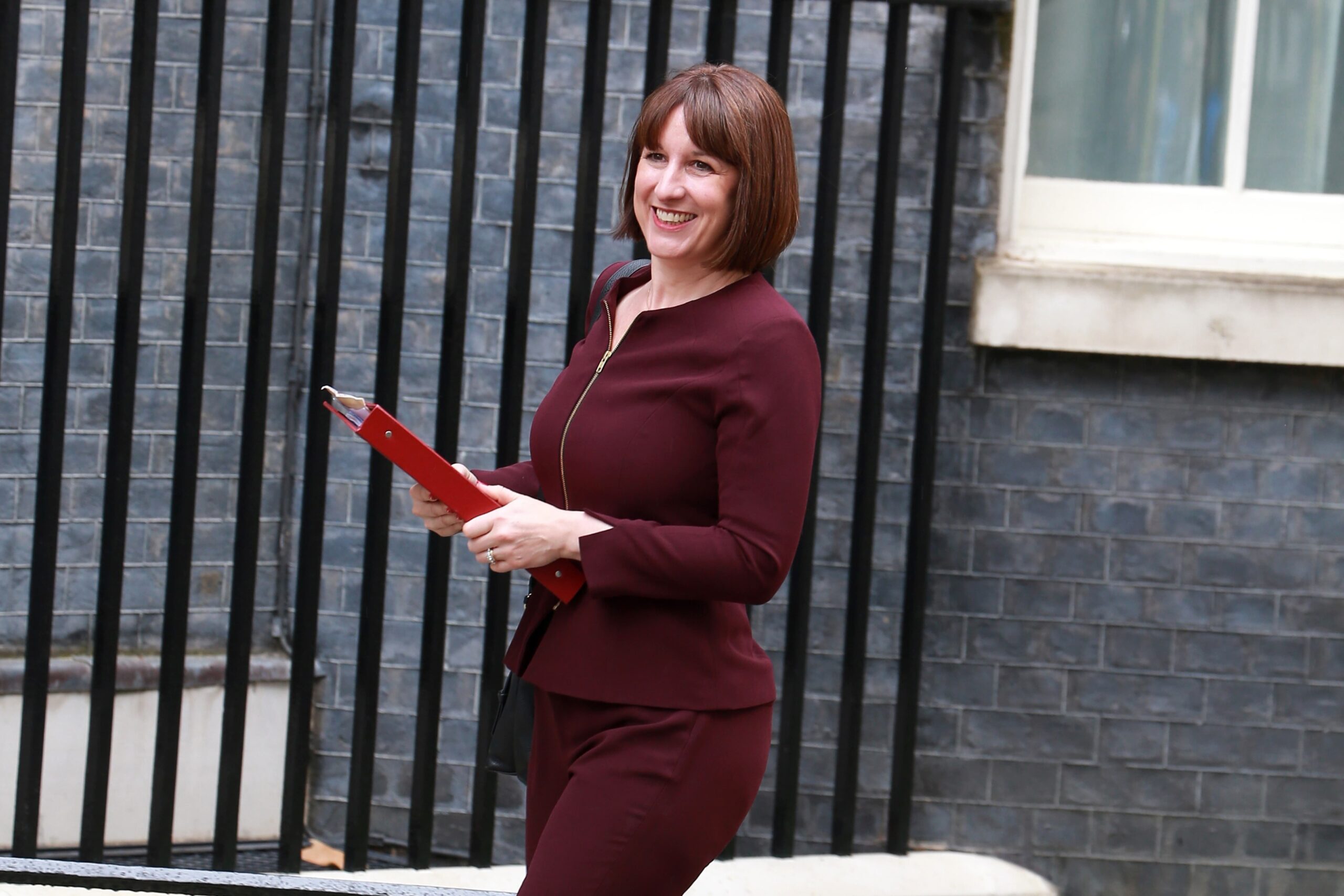
Posted on: 1st October 2021 in News
There are around 55,200 new cases of breast cancer in the UK every year – that’s roughly 150 new cases per day.
October is breast cancer awareness month, and it is more important than ever that we shine a light on the subject.
Data from Cancer Research UK revealed that 23% of breast cancer cases are preventable. However, Breast Cancer Now estimates that nearly 11,000 people in the UK could be living with undiagnosed breast cancer due to the disruption caused by COVID-19.
This article looks at some of the vital information you need to know and how you can do your bit this October.
Breast cancer is the most common type of cancer in the UK and many other countries.
Below is a breakdown of facts and statistics.

As the NHS website states, what causes breast cancer is still not fully understood.
Still, there are some risk factors that experts believe increase the risk of developing breast cancer. Some of these risks are genetic, and some are lifestyle choices.
Below are some of the risk factors. For a more extensive list, visit the NHS breast cancer page.
People can get breast cancer at any age. However, the risk of developing the disease does increase with age.
Around 8 in 10 cases happen in women over 50, which is why regular screening is important. The NHS recommends that women between 50-70 should be screened for breast cancer every three years.
If you have a history of cancer in your family, you may have a higher risk of developing the disease.
Cancer Research UK states the following:
“UK guidelines recommend that women with a moderate or high risk of breast cancer because of their family history should start having screening mammograms every year in their forties.
“If you are younger than 40 and have an increased risk of breast cancer, you should be offered yearly MRI scans from the age of 30 or 40. This depends on your level of risk.”
Breast cancer specifically doesn’t generally run in families. However, certain genes are associated with a higher risk.
BRCA1 and BRCA2 can increase your risk of developing breast and ovarian cancer. Also, genes TP53 and CHEK2 are both associated with an increased risk of breast cancer.
If a test shows a mutation that increases your risk of breast cancer, UK guidelines recommend yearly MRI scans as follows:
First, you need to be aware that there are two main types of ‘the pill’. They are:
Research has shown that the combined pill does increase the risk of breast cancer slightly. When you stop taking the pill, the risk of breast cancer stops increasing, and after 10 years, risk levels are no longer affected.
Cancer Research UK has a more detailed breakdown of the contraceptive pill and cancer risk.
The NHS explains that those who are post-menopausal and overweight or obese carry a greater risk of developing breast cancer.
Being overweight or obese after the menopause causes greater oestrogen production.
Oestrogen, the female hormone, can, in some cases, cause breast cancer cells to grow. Being exposed to more oestrogen can slightly increase the risk of developing breast cancer.
Alcohol consumption can increase the risk of developing breast cancer, even in smaller quantities.
Information from Cancer Research UK explains that each extra unit of alcohol per day increases the risk.
Over the past 40 years, breast cancer survival has doubled in the UK.
It’s not only the UK; survival rates worldwide are improving thanks to better treatments and care. However, your chances of recovery improve significantly if the disease is detected early.
Regularly checking your breasts is one of the best ways to spot if something isn’t right early. Doing this may seem scary at first. If you are unsure how to check for yourself, breast cancer charity Coppa Feel has a video to help.
So, what are some of the possible symptoms? According to Macmillan Cancer Support, possible signs and symptoms can include:
If you have any of the symptoms or notice anything unusual, you should see your GP. It may turn out to be nothing, but it’s always better to err on the side of caution.
As we have mentioned, breast cancer in the UK is more prevalent in women over 50. However, that doesn’t mean that those under 50 should not take the necessary precautions.
Mammograms, which are used to detect breast cancer, are not usually given to younger women.
The main reason for this is, mammograms are more difficult to read in younger women as their breast tissue is denser. This means that patterns used to identify cancer do not show up as well.
Although the risk of breast cancer is much lower for those under 50, the disease can still have devastating effects on younger women. Breast Cancer Now revealed that the leading cause of death in women under 50 in the UK is breast cancer.
Around 10,000 women in the UK under the age of 50 are diagnosed with breast cancer every year. Roughly 76% (7,600) of those will be women in their 40s.
While those 39 or under only make up 4% of all cases, there are still around 2,300 women in this age group diagnosed each year. The figures are startling, even more so when compounded by recent news.
The death of pop star Sarah Harding who lost her battle with breast cancer at the age of 39, highlights how the disease does not discriminate based on age.
This October is breast cancer awareness month, and you can show your support in the ongoing fight against this terrible disease.
Raising awareness is vital, so share this article and help others better understand the signs and symptoms.
You can help to fight against breast cancer by donating to registered charities. Various charities may also hold events throughout October if you would like to get involved.
Remember, no matter how big or small, any contribution will have a big impact on the lives of someone suffering from breast cancer and their loved ones.
We have 18 offices across the globe and we manage over $2billion for our 20,000+ clients
Get started
Digital Assets: From Fringe to Framework A Responsible View for Internationally Mobile Investors Executive Summary Digital assets have moved from the fringes of finance into mainstream discussion. The arrival of...
Read more
Across the global expatriate market, one product category is showing unprecedented momentum in 2025: Indexed Universal Life (IUL). As client expectations move toward solutions that combine long-term protection, tax-efficient wealth...
Read more
Chancellor Rachel Reeves delivered her second Autumn Budget in dramatic circumstances, after the Office for Budget Responsibility (OBR) accidentally released its full economic outlook online 45 minutes before her speech....
Read more
In today’s world, much of our lives are lived online. From email accounts and social media profiles to digital wallets and online businesses, we’re building a digital legacy—often without realising...
Read more